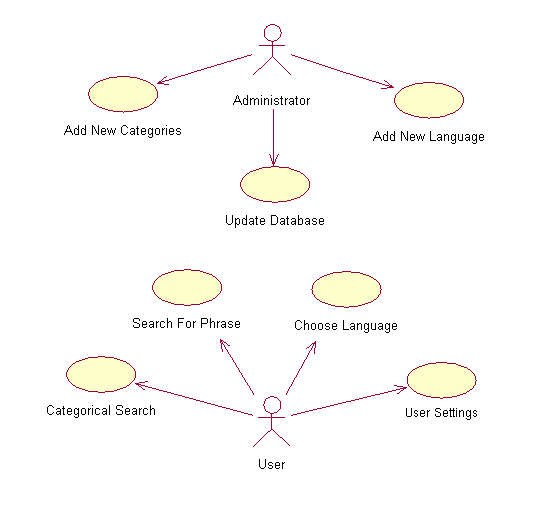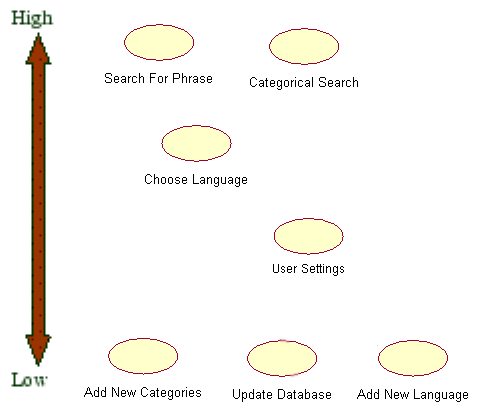

CS 262
Calvin College
Professor Keith Vander Linden
Written October 9th 2005
Revision 1.2
This is the requirements specification for EasyTalk, a product of the Kühabrlüst project. It contains the Kühabrlüst project's vision, the domain and functionality of EasyTalk, and the basic user-level features that EasyTalk will provide. It also contains the Kühabrlüst project's process model, team organization, scheduling, Gantt chart, management reporting, the Kühabrlüst project's stakeholders, hardware, software and system requirements, use case diagram and user descriptions.
People traveling to foreign countries often have difficulty communicating with the local people. Minor things such as ordering in a restaurant or finding a restroom can be impossible if you are unable to find someone who speaks your language. EasyTalk will be an easy-to-use Palm-based program that allows you to quickly and easily search for commonly-used phrases. It allows you to search in both directions, enabling you to find out what the guy at the bar just called you and to come up with an appropriate response. Due to the limited size of the phrase database we also offer the ability to translate your phrase using Google language tools.
The development of EasyTalk will follow a spiral software development model, and a democratic organizational structure will be used for team administration.
Here is our roadmap for project completion
A schedule for the semester to keep us on-track.
The Kühabrlüst team will meet at least once a week at a time to be determined at the end of the last weekly meeting. Notes will be taken at each meeting and will be recorded in the form of minutes afterwards. These minutes will be kept on file but not submitted unless requested by the customer. At the end of each meeting the agenda for the next meeting will be determined and recorded in the minutes.
The members of the kühabrlüst team are Tim Brom, Brian Lubben, Dave Hanson, Matt Kummershek and David Streng. Other stakeholders include Keith Vander Linden, the customer who will evaluate the quality and effectiveness of the system and foreign travelers who will make up our userbase once the product ships.
Hardware, software and support necessary for project completion
A PC with WSDD installed for development of the software for the Palm.
A Palm device for testing real-world usability.
A computer with a relational database system and a scripting environment for handling translation requests from the application.
Development environment for writing the palm application
Database for storage and retrieval of translation data
Web server to handle translation requests from the palm device
Our backend script is written using the Perl scripting language
References for help developing the palm application
Potential problems that will come up in the course of project development
Use case diagrams for EasyTalk

Prioritized use case diagram
